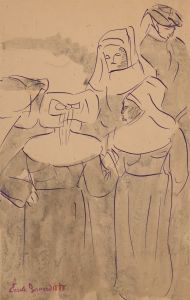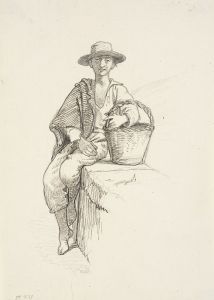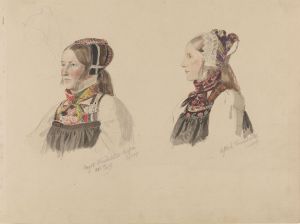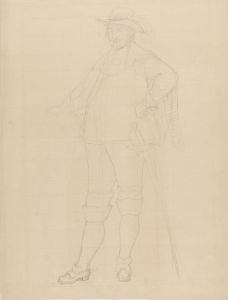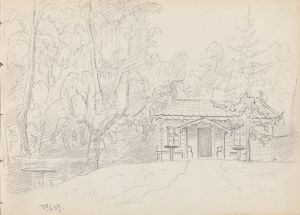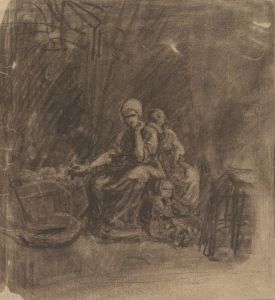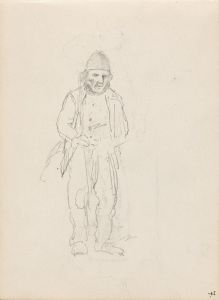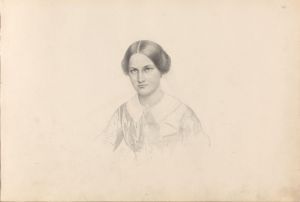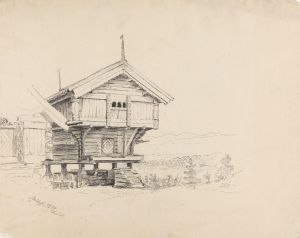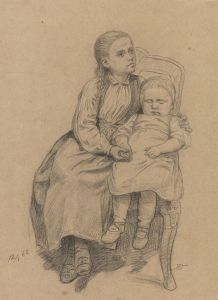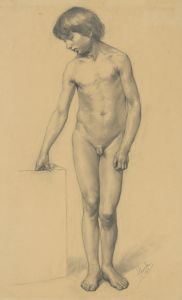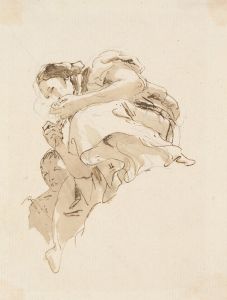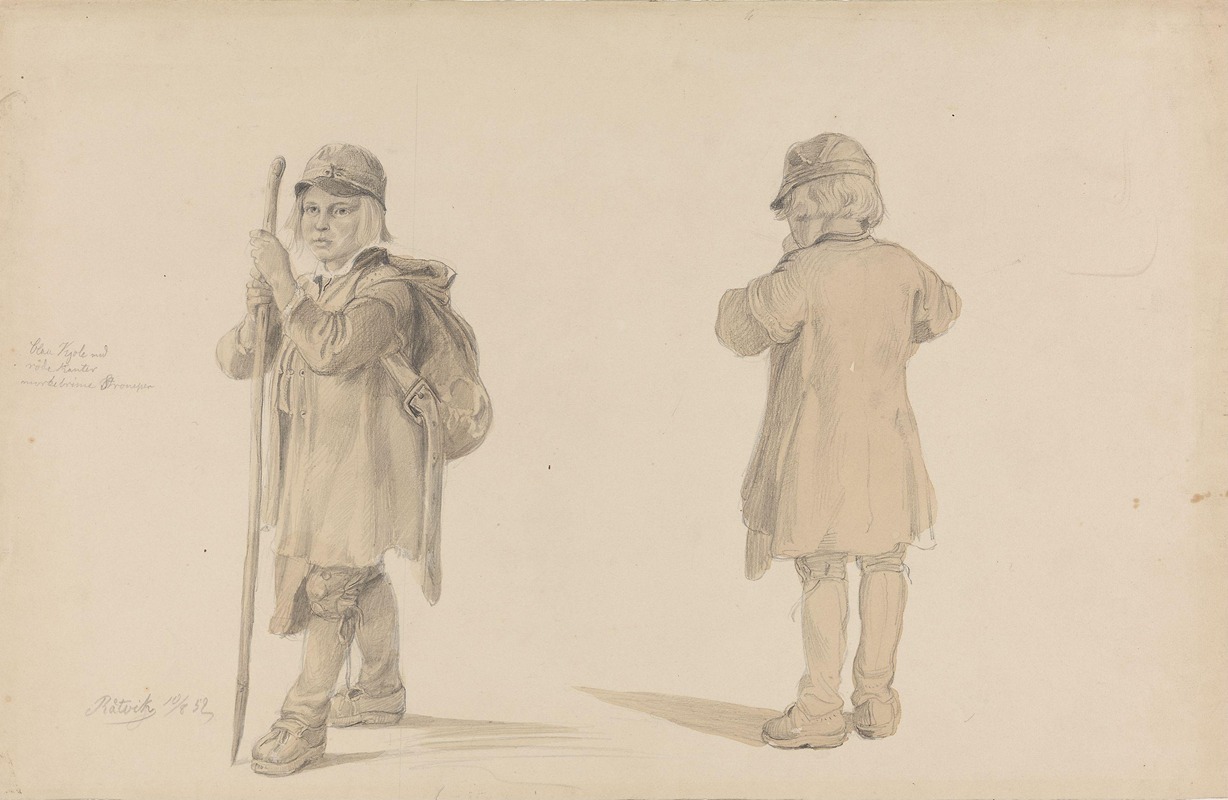
Liten gutt, Rætvik
A hand-painted replica of Adolph Tidemand’s masterpiece Liten gutt, Rætvik, meticulously crafted by professional artists to capture the true essence of the original. Each piece is created with museum-quality canvas and rare mineral pigments, carefully painted by experienced artists with delicate brushstrokes and rich, layered colors to perfectly recreate the texture of the original artwork. Unlike machine-printed reproductions, this hand-painted version brings the painting to life, infused with the artist’s emotions and skill in every stroke. Whether for personal collection or home decoration, it instantly elevates the artistic atmosphere of any space.
Adolph Tidemand was a prominent Norwegian painter in the 19th century, known for his detailed and realistic depictions of Norwegian folk life and traditions. One of his lesser-known works is "Liten gutt, Rætvik," which translates to "Little Boy, Rætvik." This painting is a fine example of Tidemand's ability to capture the essence of rural Norwegian life, focusing on the innocence and simplicity of childhood.
Adolph Tidemand was born on August 14, 1814, in Mandal, Norway. He studied art in Copenhagen and later in Düsseldorf, which was a significant center for the arts during that period. Tidemand became a central figure in the Düsseldorf school of painting, which emphasized detailed realism and often focused on historical and genre scenes. His works often depicted Norwegian peasant life, national costumes, and landscapes, contributing significantly to the national romantic movement in Norway.
"Liten gutt, Rætvik" is a painting that exemplifies Tidemand's interest in everyday life and his skill in portraying it with authenticity and empathy. The painting features a young boy, presumably from the rural area of Rætvik, a location that may have been significant during Tidemand's time. The boy is depicted in traditional Norwegian attire, which Tidemand often used to highlight the cultural heritage of Norway. The clothing and setting provide insights into the lifestyle and environment of the period, reflecting Tidemand's dedication to preserving Norwegian culture through his art.
Tidemand's work is characterized by its attention to detail and the emotional depth he brings to his subjects. In "Liten gutt, Rætvik," the boy's expression and posture convey a sense of innocence and curiosity, inviting viewers to connect with the subject on a personal level. This ability to evoke emotion and tell a story through his paintings is one of the reasons Tidemand's work remains significant in Norwegian art history.
Throughout his career, Tidemand collaborated with other artists, most notably Hans Gude, with whom he created several famous works, including "Bridal Procession on the Hardangerfjord." While "Liten gutt, Rætvik" may not be as widely recognized as some of his other pieces, it still holds value as part of his extensive body of work that documents Norwegian life and traditions.
Adolph Tidemand passed away on August 25, 1876, but his legacy lives on through his paintings, which continue to be celebrated for their contribution to Norwegian cultural identity. His works are housed in various museums and collections, including the National Gallery in Oslo, where they continue to be studied and admired by art enthusiasts and historians alike.
In summary, "Liten gutt, Rætvik" is a testament to Adolph Tidemand's skill as a painter and his dedication to capturing the essence of Norwegian rural life. Through his detailed and emotive portrayal of a young boy from Rætvik, Tidemand offers a glimpse into the past, preserving a piece of Norway's cultural heritage for future generations to appreciate.





